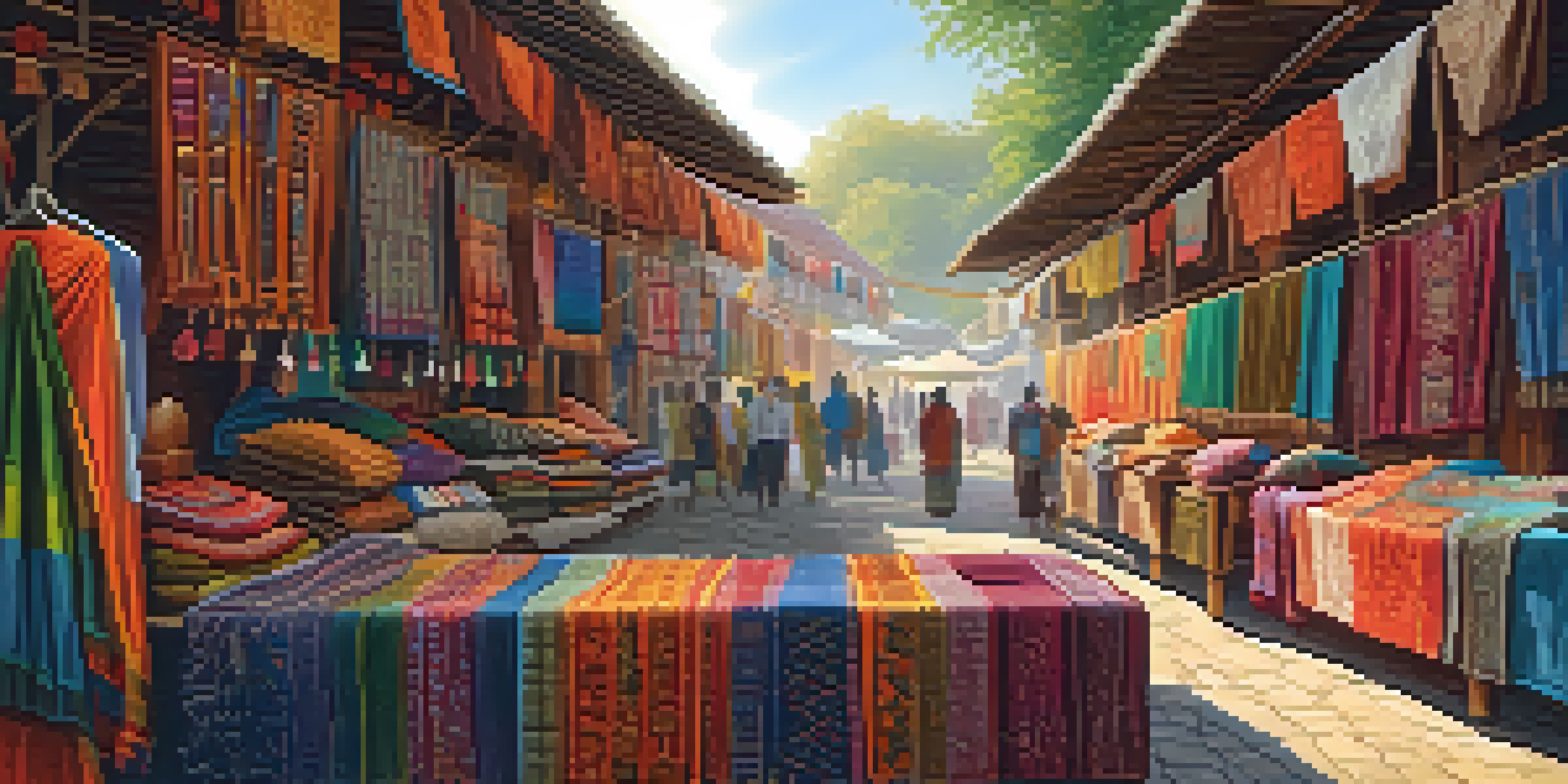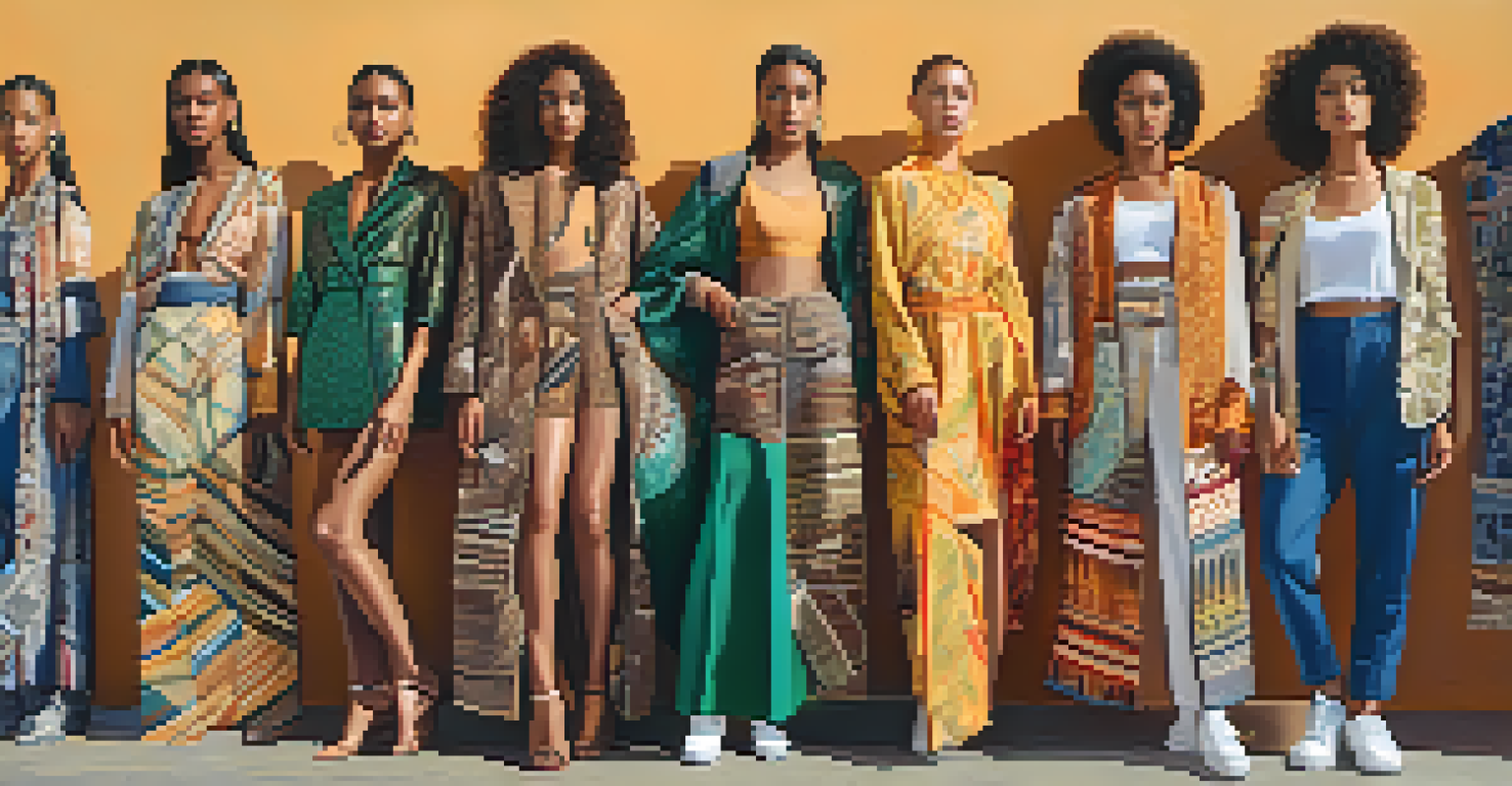Cultural Sensitivity: A Guide for Fashion Designers

Understanding Cultural Sensitivity in Fashion
Cultural sensitivity refers to the awareness and respect for cultural differences that impact various aspects of life, including fashion. For designers, it means acknowledging the rich tapestry of global cultures and understanding how their work interacts with these diverse backgrounds. It's not just about avoiding offense; it's about celebrating diversity and fostering inclusivity in fashion design.
Fashion is about something that comes from within you.
Fashion is a powerful form of expression, but it can also perpetuate stereotypes or misrepresent cultures if not approached thoughtfully. By being culturally sensitive, designers can create pieces that honor the traditions and identities of various groups rather than exploit them for profit. This understanding can elevate a designer's work from merely aesthetic to deeply meaningful.
For example, a designer inspired by traditional Indian textiles should delve into their history and significance rather than just replicate the patterns. This depth of understanding helps in creating pieces that resonate with authenticity and respect, ultimately enriching the fashion landscape.
Researching Cultural Contexts Before Designing
Before diving into a new collection, designers should conduct thorough research on the cultures they plan to draw inspiration from. This involves not only understanding the aesthetics but also the history, values, and meanings behind cultural elements. By learning about the cultural significance of certain motifs or garments, designers can avoid unintentional misappropriation.

Engaging with cultural experts, community members, or historians can provide invaluable insights that enrich a designer's work. Consider reaching out to local artisans or cultural organizations to gain a deeper understanding of their craft. This collaborative approach can foster meaningful relationships and lead to authentic designs that celebrate rather than exploit cultural heritage.
Cultural Sensitivity in Design
Designers must acknowledge and celebrate diverse cultural backgrounds to create meaningful fashion.
For instance, if a designer is inspired by African prints, they should understand the stories and traditions behind the patterns. This knowledge not only enhances the design process but also ensures that the final products resonate with respect for the culture involved.
Avoiding Cultural Appropriation in Fashion
Cultural appropriation occurs when elements of one culture are adopted by members of another culture without permission or understanding, often leading to disrespect or misrepresentation. Fashion designers must tread carefully to avoid this pitfall by ensuring that their work respects the source culture. This means being conscious of the origins of certain styles, patterns, and garments.
Clothes mean nothing until someone lives in them.
A key aspect of avoiding cultural appropriation is to seek permission or collaborate with individuals from the culture being represented. This not only honors the source culture but also enriches the design process with authentic voices and perspectives. By involving cultural representatives, designers can create collections that are both innovative and respectful.
For example, if a designer wishes to incorporate Indigenous patterns into their work, they should engage with Indigenous artists and communities. This collaboration can lead to a more genuine representation and can help educate the wider audience about the culture's significance.
The Role of Representation in Fashion Design
Representation in fashion is crucial for reflecting the diversity of society. Designers have the power to challenge stereotypes and promote inclusivity through their collections. By featuring models of various backgrounds, sizes, and abilities, designers can convey a message of acceptance and celebrate the beauty of diversity.
Moreover, representation extends beyond the runway. It involves showcasing diverse voices in marketing campaigns, product lines, and even in the design process itself. By amplifying underrepresented voices, designers not only enhance their brand's credibility but also contribute to a more inclusive fashion industry.
Avoiding Cultural Appropriation
Collaborating with cultural representatives ensures respect and authenticity in fashion collections.
For instance, a brand that collaborates with designers from marginalized communities can offer unique perspectives and designs that resonate with broader audiences. This approach not only enriches the brand's offerings but also fosters a sense of belonging among diverse consumers.
Sustainable Practices and Cultural Sensitivity
Sustainability in fashion is closely linked to cultural sensitivity. Many traditional crafts and techniques are inherently sustainable, reflecting a deep respect for the environment and local resources. By integrating these practices, designers can honor cultural traditions while also promoting eco-friendly solutions in their collections.
Incorporating sustainable practices involves more than just using organic materials; it also means respecting the craftsmanship and labor of artisans from different cultures. Designers should consider fair trade practices and ensure that the artisans are compensated fairly for their work. This creates a win-win scenario where both the designer's vision and the artisan's heritage are respected.
For example, a designer who collaborates with artisans in a local community to create ethically sourced garments can tell a powerful story that resonates with consumers. This not only elevates the product's value but also highlights the importance of preserving cultural heritage and sustainable practices.
Engaging with Communities for Feedback
Engaging with communities is a vital step for designers seeking to create culturally sensitive pieces. By involving individuals from the cultures they aim to represent, designers can gain critical feedback that ensures their work is respectful and accurate. This dialogue can lead to greater understanding and stronger connections between the designer and the culture.
Feedback sessions can take various forms, from informal discussions to structured focus groups. These interactions can uncover nuances that a designer may not have previously considered, highlighting the importance of community voices in the design process. It's an opportunity for collaboration that enriches both the designer's perspective and the cultural representation in their work.
Importance of Community Engagement
Involving communities in the design process leads to accurate and respectful cultural representation.
For instance, a designer working on a collection inspired by Latin American culture might host workshops with local community members. This collaborative effort can produce designs that reflect authentic cultural narratives while building bridges between the designer and the community.
The Future of Fashion: Embracing Cultural Sensitivity
The future of fashion is bright for those who embrace cultural sensitivity. As consumers become more aware and demanding of ethical practices, designers who prioritize cultural respect will stand out in the market. This shift not only benefits brands but also contributes to a richer and more diverse fashion landscape.
By fostering a culture of awareness and respect, the fashion industry can evolve into a space that celebrates creativity while honoring the roots of its inspirations. Designers can create impactful stories and products that resonate with consumers who value authenticity and inclusivity.

In conclusion, embracing cultural sensitivity is not just a trend; it's a responsibility. The fashion industry has the unique opportunity to influence societal perceptions and promote understanding through thoughtful design and collaboration.